The Artemis Program
CLICK HERE TO DOWNLOAD PDF VERSION
View Related Video at: https://youtu.be/2YzWUcDss3g
Introduction
NASA’s Artemis Project represents a bold initiative to return humans to the Moon and establish a sustainable presence on and around our closest celestial neighbor. Named after the Greek goddess of the Moon and the twin sister of Apollo, the Artemis program aims to build on the legacy of the Apollo missions while setting the stage for future exploration of Mars and beyond. This short article provides an overview of the Artemis Project, exploring its historical context, objectives, key components, and future outlook. It also highlights its significance in the broader context of human space exploration.
Historical Context

Genesis of the Artemis Project
Under the Trump Administration in 2017, Space Policy Directive-1 was issued. This change in space policy facilitated the collaboration of international and private corporations to work alongside NASA. Following the issuance of this policy, plans to send humans to an asteroid were scrapped and instead brought the focus of NASA and other space agencies to lunar exploration. The recently created National Space Council members emphasized the importance of lunar exploration as a stepping stone to getting humans to mars.
Shift from Mars-Focused Missions to Lunar Exploration
However, several factors drove the strategic shift to focus on the Moon first. Throughout the 2010s under the Obama Administration, those involved in space exploration aimed to send humans to Mars, with timelines as soon as 2030. The shift from Mars-focused missions to lunar exploration was motivated by various factors. The Moon is our nearest neighbor in the vastness of space. That proximity offers the potential for easier logistics, making it an ideal testing ground for the technologies and operational concepts needed for long-duration missions to Mars. Moreover, the lunar surface provides vital resources, like water ice, to sustain a long-term human presence and further exploration. The Artemis program will ensure that the United States will continue to be the leader in lunar exploration and development.

Role of NASA and International Space Agencies
The Artemis program is built on extensive collaboration with international partners, such as the European Space Agency (ESA), the Japan Aerospace Exploration Agency (JAXA), and Roscosmos. Such partnerships expand the program’s capabilities and focus by bringing in critical additional technologies and knowledge. ESA, for example, is developing the service module for the Orion spacecraft, which will provide the propulsion, power, and life support systems needed for the mission.
Comparison with Apollo Missions
Since the Apollo era, spacecraft and mission planning capabilities have advanced dramatically. Space travel has become safer and more efficient due to new materials, computing power, and automation. Unlike the short-term exploration goals of the Apollo missions, Artemis will develop and begin testing the systems needed for a sustainable human presence on the Moon, long-term scientific research, and lunar resource utilization. The focus on reusability of rockets by Space X continues to drive down launch costs.
Objectives of the Artemis Project
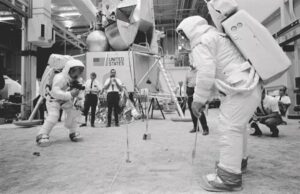
Human Exploration
Artemis II will involve the orbit of astronauts around the moon in late 2025. The first woman and next man will land on the Moon by 2026 with the Artemis III Mission. This will be the first human mission to the surface within the program and will return humans to the moon for the first time since December 1972. This mission will be followed by additional missions on and around the Moon that will maximize the use of commercial and international partnerships and enable human exploration of and development of the Moon along with future human missions to Mars. Subsequent missions in this series will seek to establish further a human presence on the moon’s south pole. Unlike the Apollo Missions, the crew will conduct scientific research on the Moon’s surface inside a pressurized base camp.
Sustainability
Reestablishing human presence on the Moon and maintaining such a presence will include new infrastructure development such as lunar habitats, power systems, and life support technologies. Sustainability through using local resources by implementing in-situ resource utilization (ISRU) methods to lower the reliance on Earth-imported materials and contribute to prolonged human habitation and exploration effort is also of great importance.

Science and Technology
Artemis seeks to achieve high-priority scientific investigation goals such as examining the lunar geology and expanding our understanding of space weather and the Moon as a base for future space exploration. At the same time, the program drives technical innovation in spacecraft design, propulsion systems, and communications technologies that will help successful lunar missions and future Mars missions.
Entrepreneurial & Global Partnerships
Commercial companies, including SpaceX, Blue Origin, and Dynetics, are vital parts of the Artemis program. Partnerships span innovation, cost savings, and mission advancement. The participation of ESA, JAXA, and other global contributions from space agencies are key bastions of international partnership, reflecting the current global effort in space exploration.
Critical Components of the Artemis Project
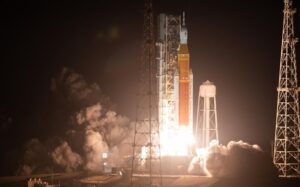
Space Launch System (SLS)
The SLS is a more powerful rocket than even the Saturn V. It is intended to lift both manned and unmanned missions into lunar orbit in the Artemis Program. The SLS has undergone extensive testing and development to become suitable for Artemis missions. Its successful maiden voyage took place in the Artemis 1 Mission on November 16, 2022.
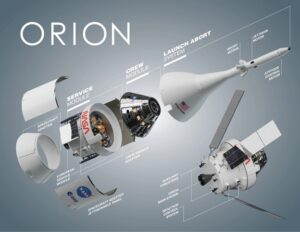
Orion Spacecraft
The Orion capsule is NASA’s most capable and newest spacecraft to support manned missions. Equipped with life support systems, navigation technologies, and safety features, Orion is a safe and uniquely powerful spacecraft. These are designed to support astronauts for missions beyond Earth’s orbit, being a stable and safe habitation for crewed missions to the Moon and beyond.
Lunar Gateway
The Lunar Gateway is a small space station that NASA plans to build in orbit around the moon with Artemis III missions and beyond. The crew will be capable of extended missions supporting broader research efforts and international collaboration. The Gateway’s modular design makes it capable of expanding and accommodating a variety of mission objectives.
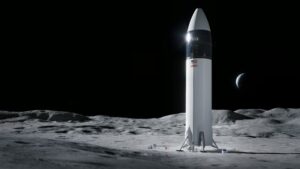
Human Landing System (HLS)
The HLS itself will be used to ferry astronauts from lunar orbit to the Moon and back again. Several firms are working on lander designs, with SpaceX, Blue Origin, and Dynetics leading the pack. These landers will be crucial for achieving the Artemis program’s goal of sustainable lunar exploration.
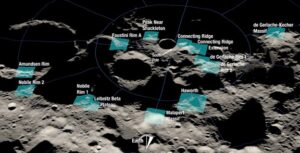
Artemis Base Camp
The Artemis Base Camp will be established at the lunar South Pole, providing a long-term habitat for astronauts. The base camp will include living quarters, research facilities, and systems for resource utilization, supporting extended missions and scientific exploration.

Lunar Terrain Vehicles
Nasa will contract with one of the following firms: Intuitive Machines, Intuitive Machines or Venturi Astrolab to design and build the next generation of lunar vehicles to provide both manned operation and remote, unmanned operation. These firms currently have contracts with Nasa to provide preliminary design concepts.
Preparation for Mars Missions
The Artemis missions serve as a proving ground for technologies and operational concepts needed for Mars exploration. Lessons learned from lunar missions will inform the design and planning of future Mars missions, addressing challenges such as long-duration space travel, life support, and resource utilization.
Potential for Scientific Discoveries
Artemis will show us much more of the Moon than ever before, leading to a deeper understanding of the unique characteristics of our nearest celestial neighbor, how the Earth-Moon system functions together, and how impacts from neighboring bodies in the solar system have changed these bodies over the four billion years. The Moon provides a unique opportunity to learn about planetary formation, space weather, and resources that may be useful to future explorers.
Integration with Future Space Missions
As part of NASA’s larger exploration efforts, Artemis will be followed by other programs like Mars Sample Return and the James Webb Space Telescope. The agency’s depth of experience and knowledge will help humanity strengthen and maintain a human presence on the Moon and foster international cooperation and a global economy on the Moon.
Conclusion
Artemis is the first step toward the next era of human exploration. Artemis is uniquely positioned to advance our knowledge of the Moon and the wider solar system by focusing on sustainability, international partnerships and scientific discovery. The Artemis program will continue to fuel humanity’s curiosity for space exploration and innovation and will secure humanity’s future in space. As we move forward, The Artemis Project is a reminder of the unassailable human demand for exploration, fulfillment and discovery.
